Pie crust seems to be a difficult skill for many people to master — including me! It took a long time and many doughy, tough pie crusts before I managed to make a passable pie crust. If you are new to pie baking or simply struggle to make a good crust, start here with this butter pie pastry. Butter makes the dough a bit easier to handle than either lard or shortening and, if you follow my suggestions here, you will be on the way to improved pie pastry!
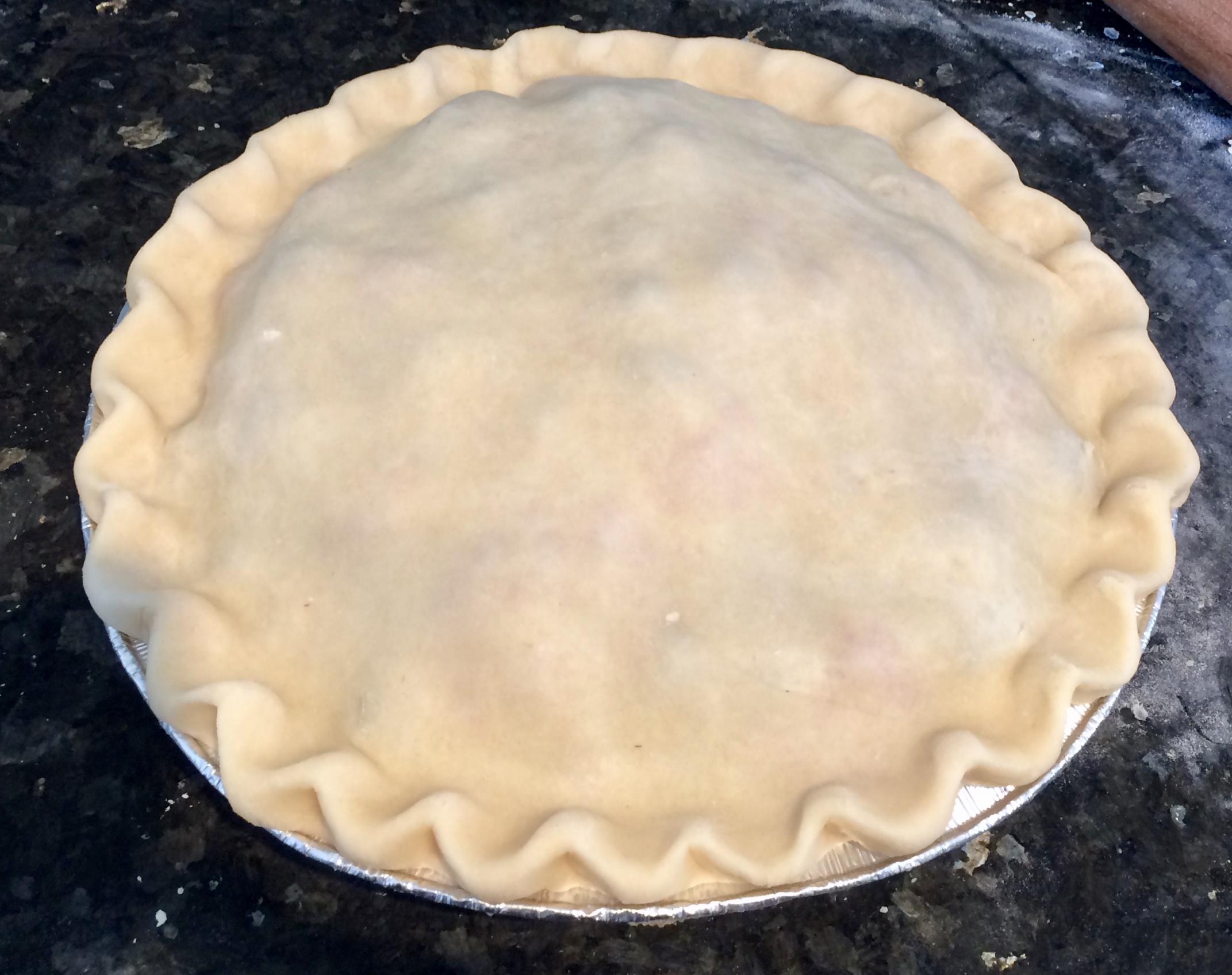
The Recipe
by volume by weight
1½ cups all purpose flour 180 grams all purpose flour
8 tablespoons cold butter 113 grams cold butter
1/4 cup cold water 60 grams cold water
1/2 teaspoon salt 2 grams salt
Directions
Mix the salt and flour together and finely dice the butter.
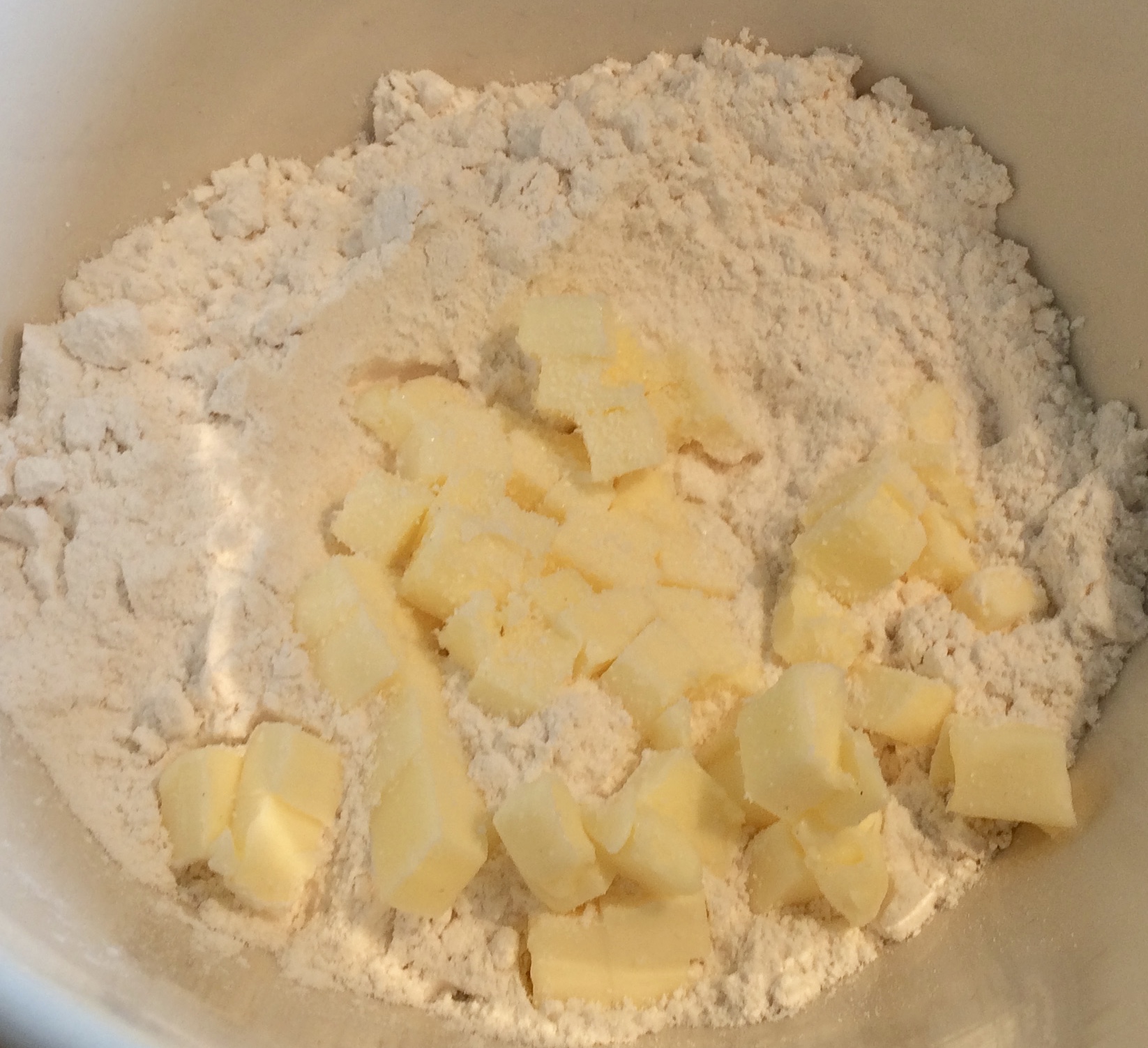
Use a fork or a pastry cutter to work the butter into the flour until there are small, pea sized pieces of butter.
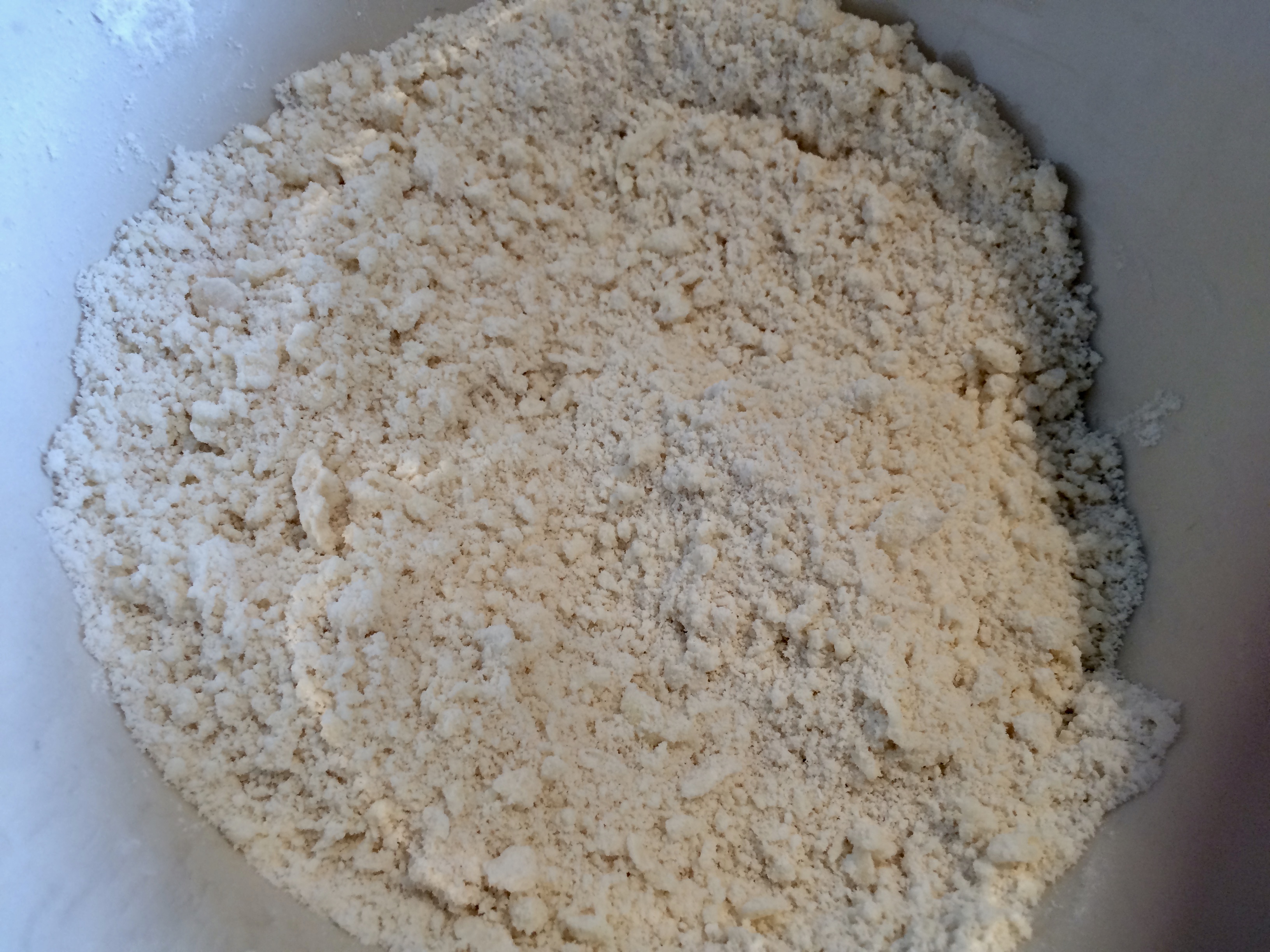
Add the cold water and mix just to combine.
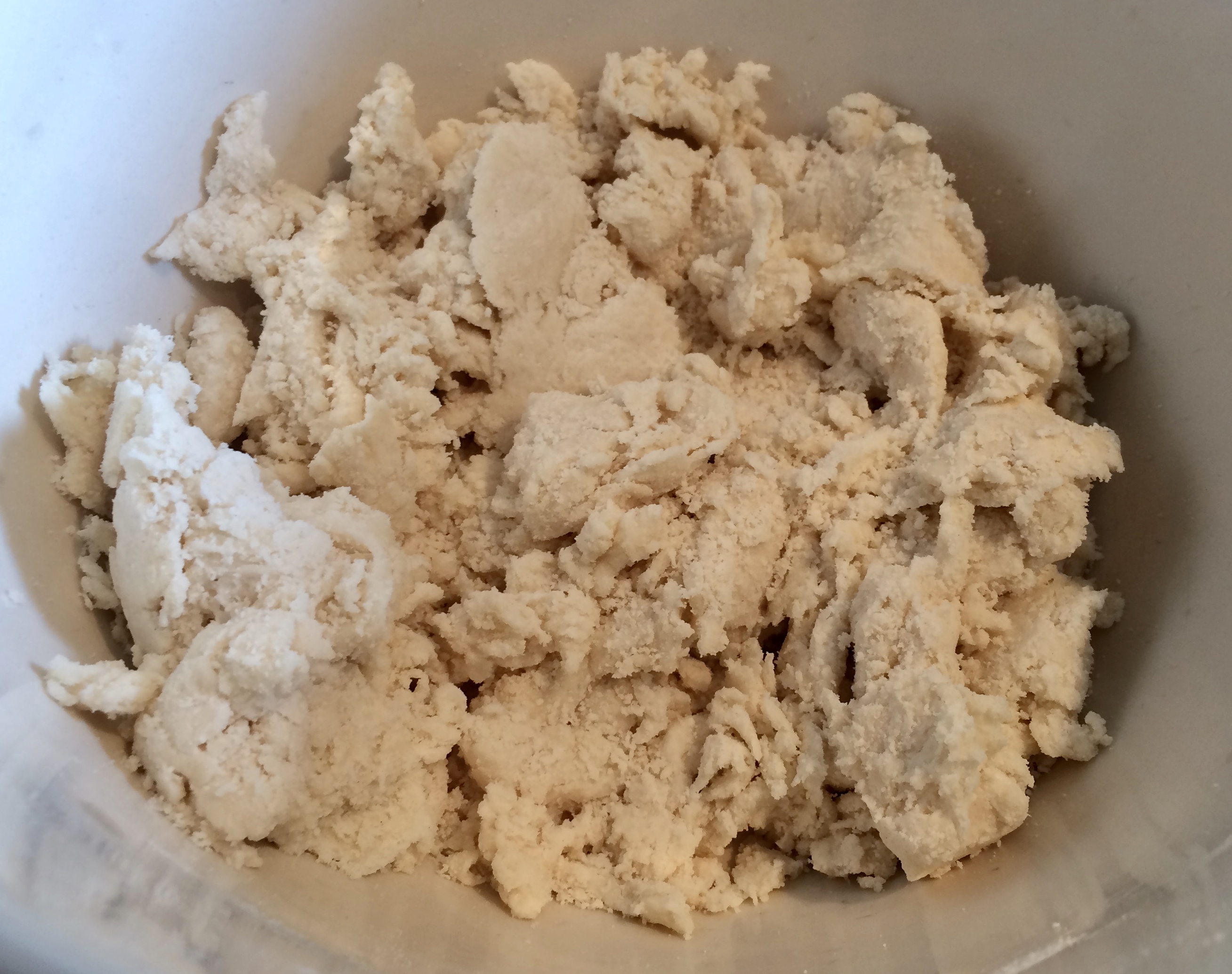
At this point, it is very important not to handle the dough any more than necessary. Don’t try to “fix” anything that looks less than perfect and, whatever you do, no rerolling! Handling the dough too much makes it tough and chewy rather than light and flaky so resist the urge to fuss with the dough.
Turn the dough out onto a floured board and pat/press into a round shape. There is a 3 pat maximum here so don’t overtouch. Remember, you are just trying to get the dough into a rough shape — perfection is not the answer here.
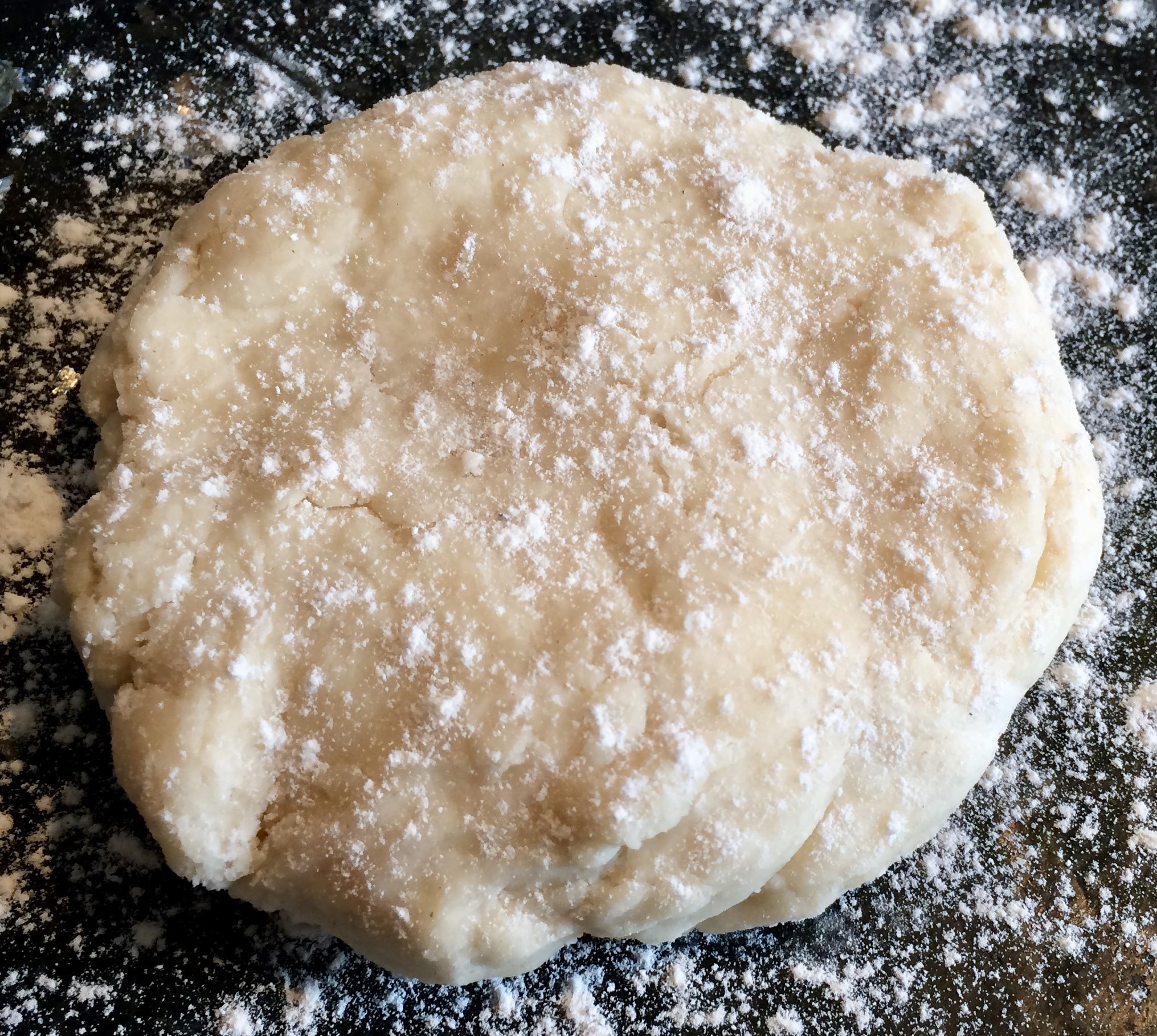
Use your rolling pin to roll the dough into an oval and then rotate the dough 45 degrees.
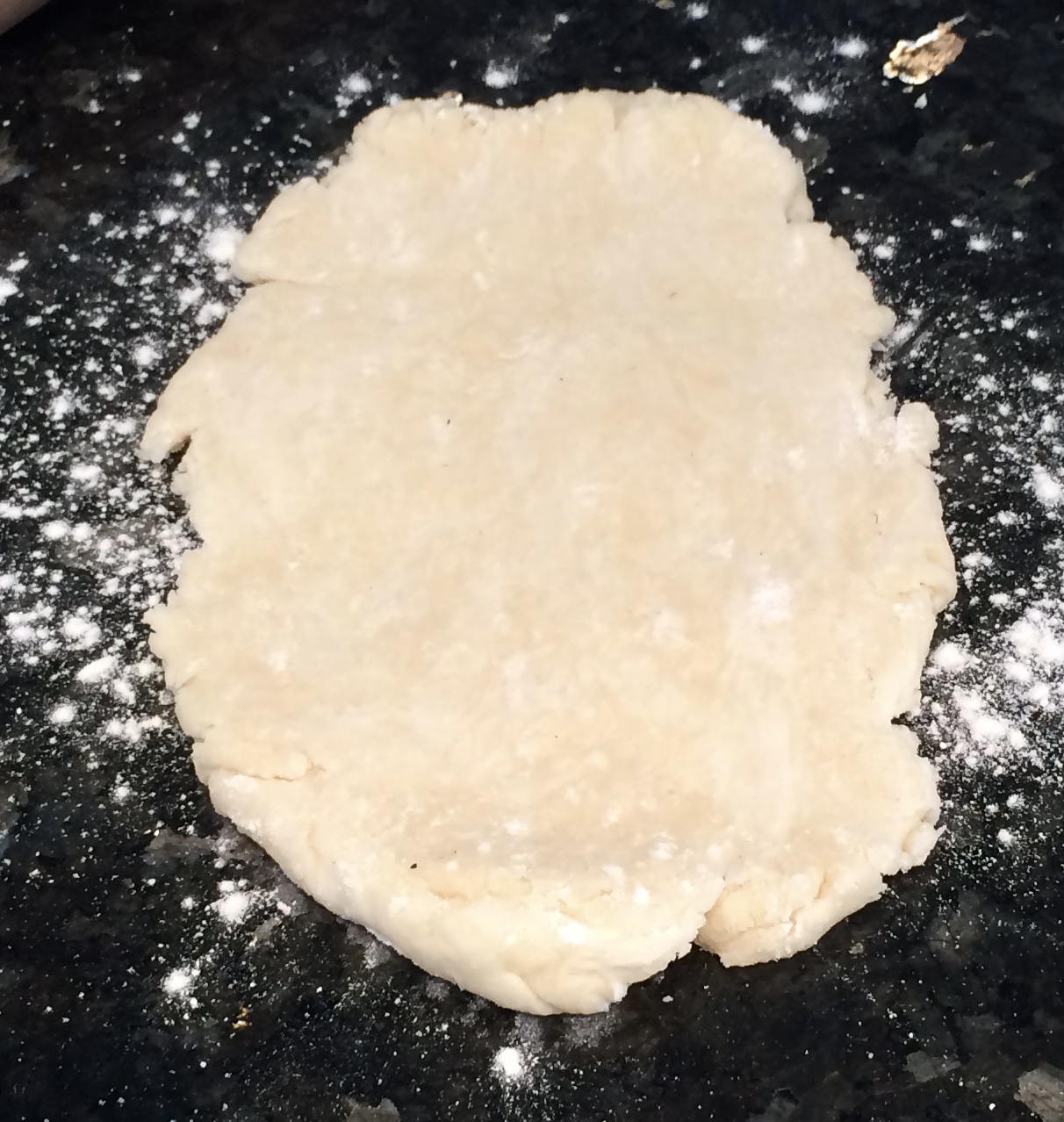
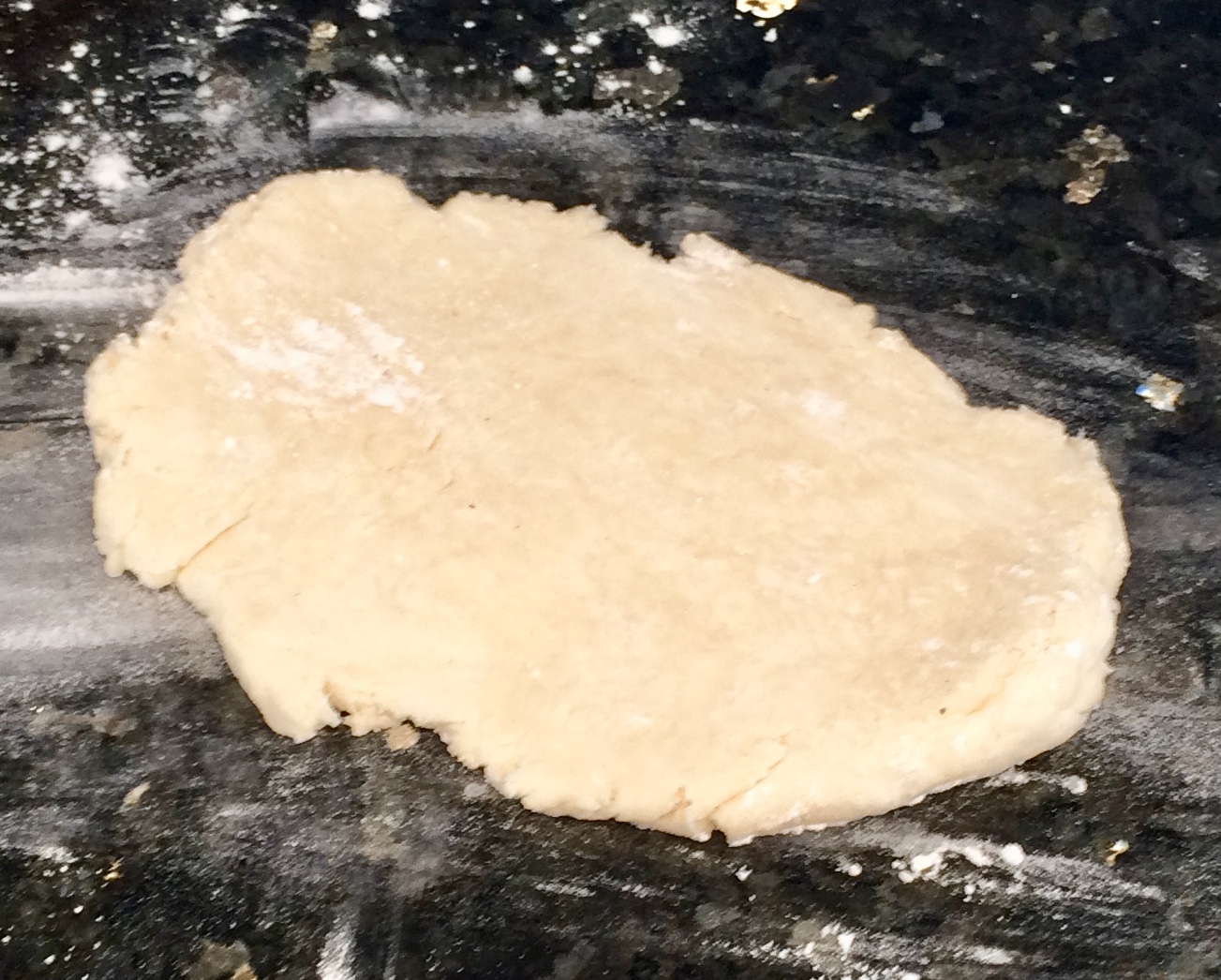
Move the dough around so it picks up a little extra flour on the bottom side and roll again.
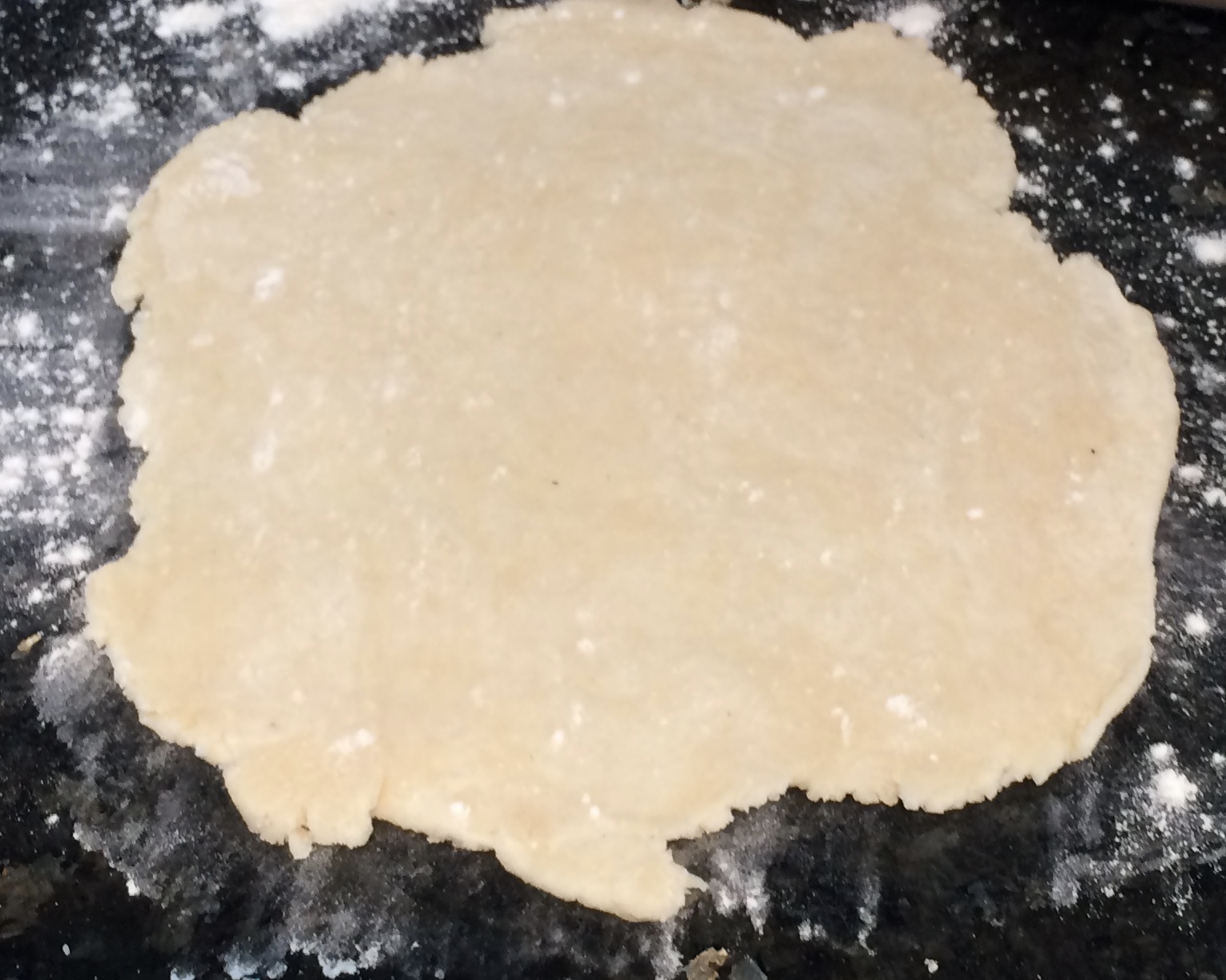
This process, done consistently, keeps the dough from sticking to the counter and helps keep the dough in a relatively round shape. Continue this process of rolling and moving until the dough is larger than your pie plate and add extra flour only if it is absolutely necessary. 1½ inches of dough around the outside edge of the pie plate is a good rule of thumb.
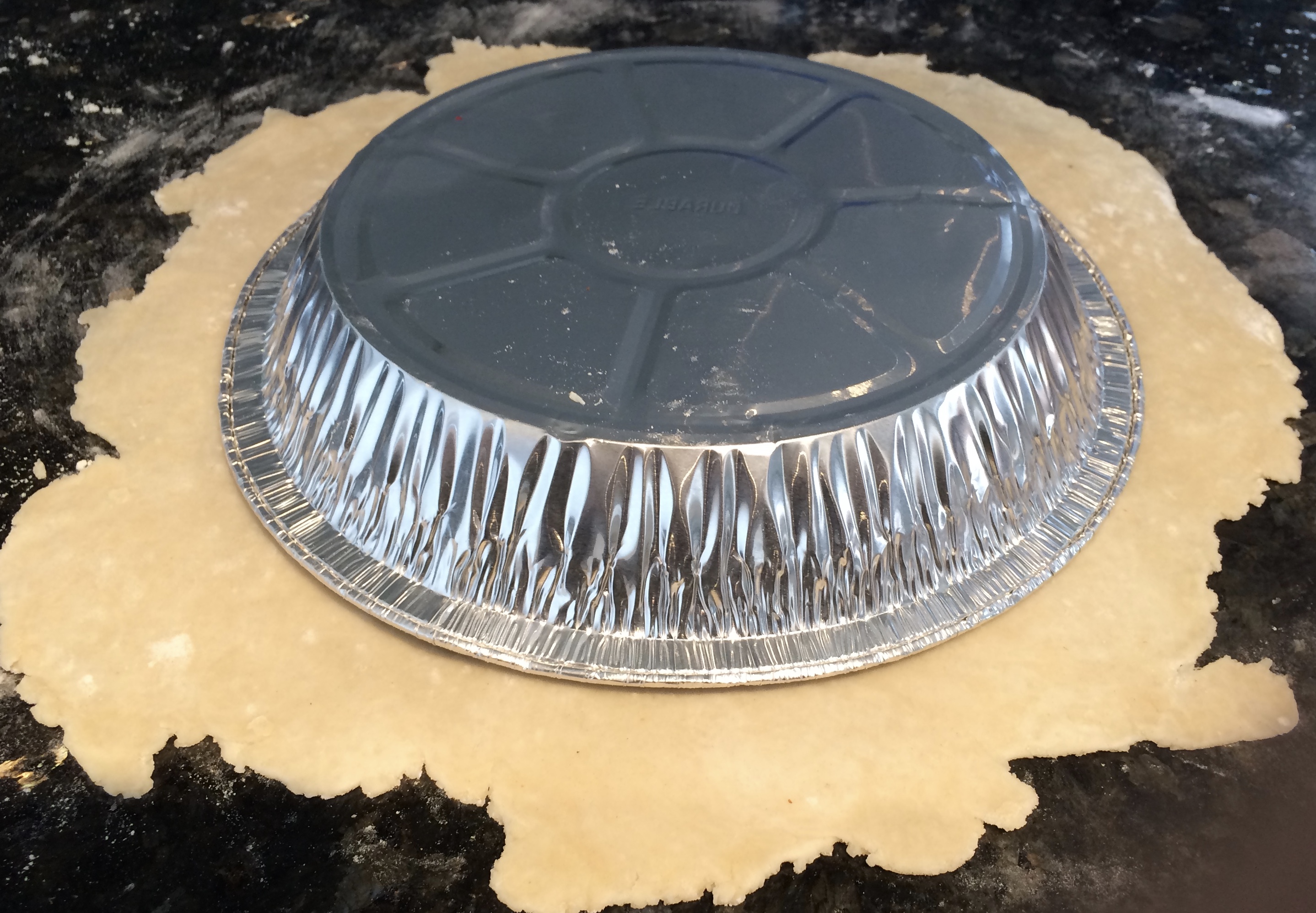
Gently fold the pie crust in half and place the dough in the pie plate.
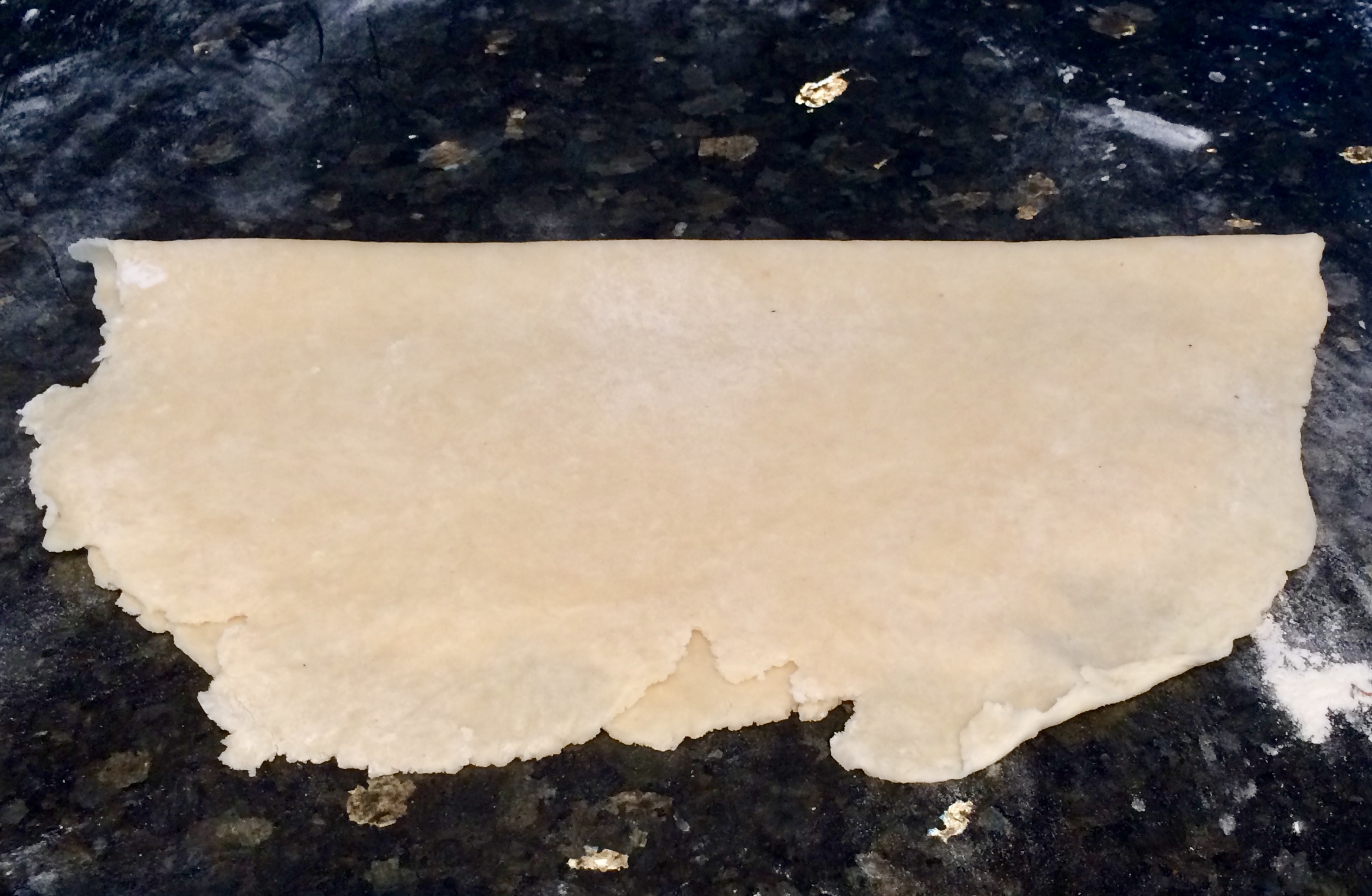
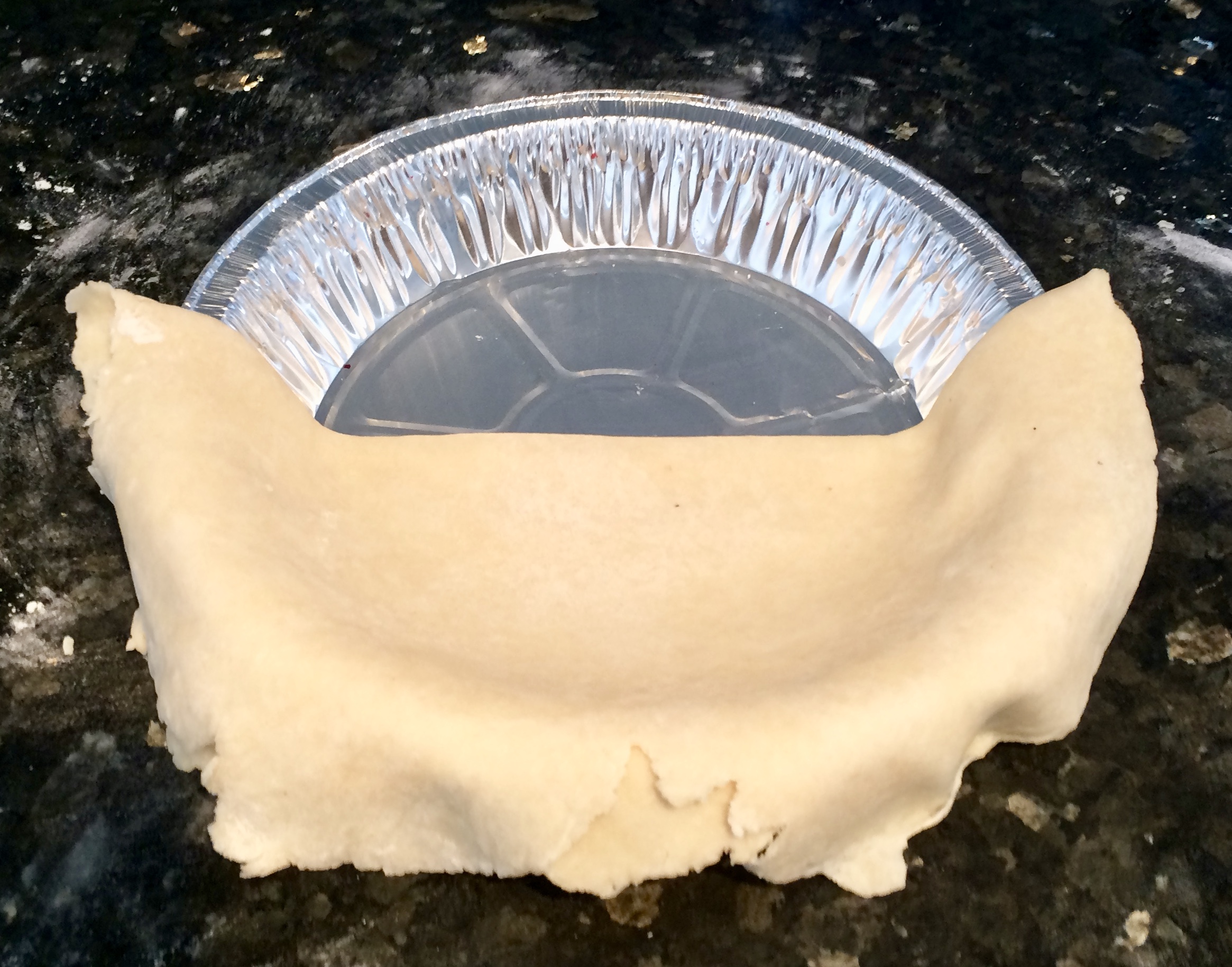
Unfold the dough and gently fit the dough down into the edges of the pie plate bottom.
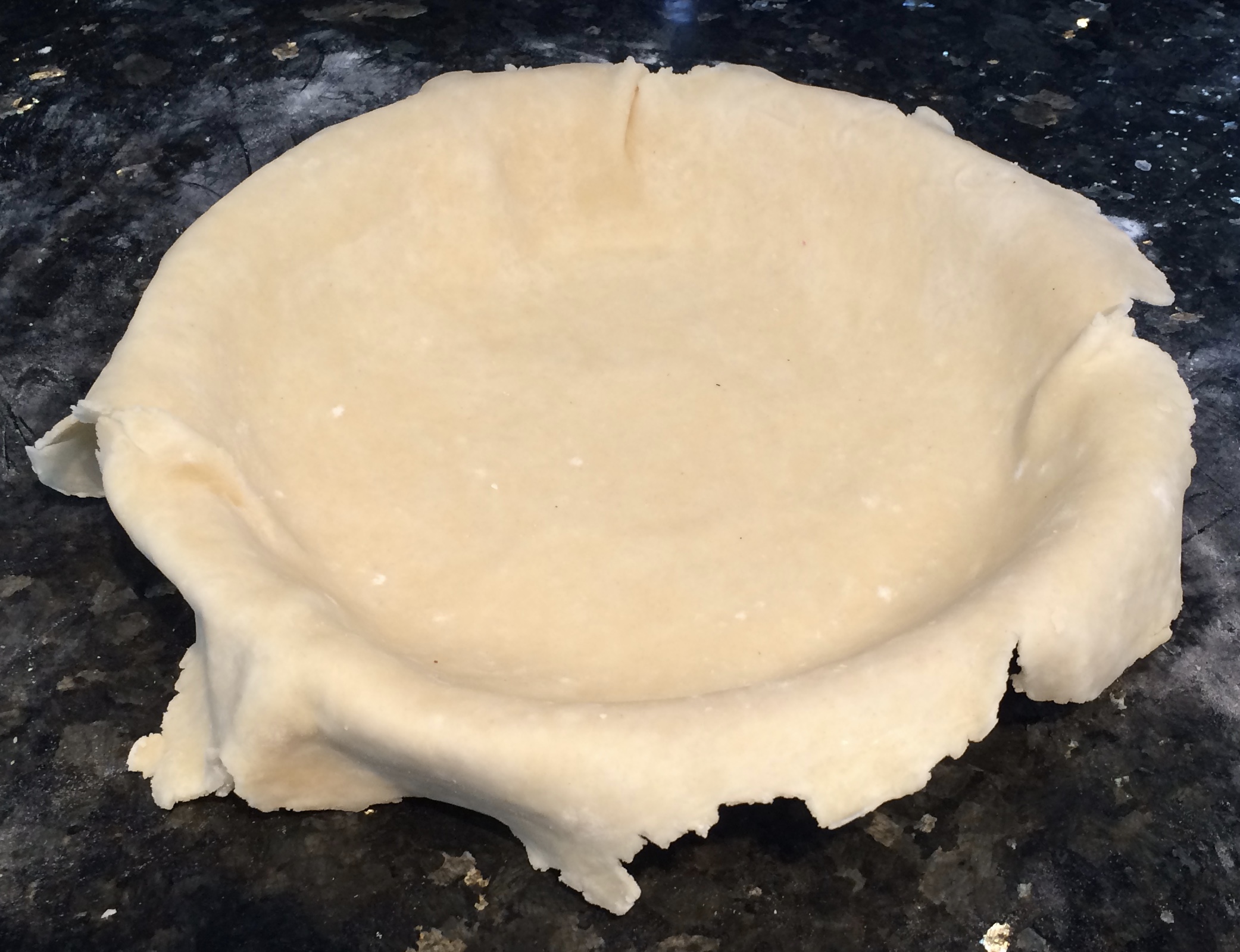
Trim any long edges so that the dough has the same amount of overhang all the way around the plate.
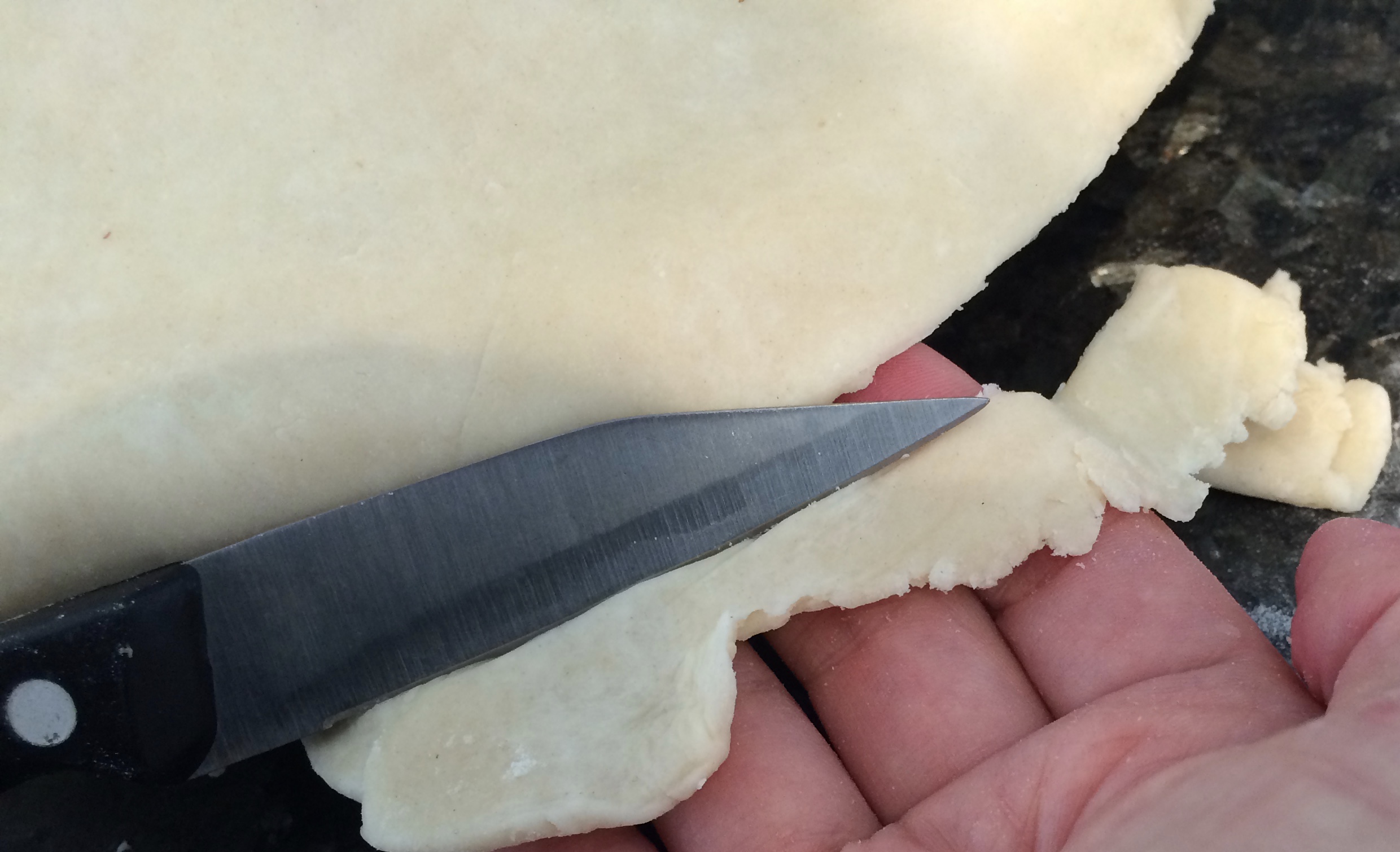
If you are making a one crust pie, such as chocolate cream pie, gently fold the edge of the pie crust under and press lightly so that you have a nice rim of pie dough that sits on the edge of the plate. 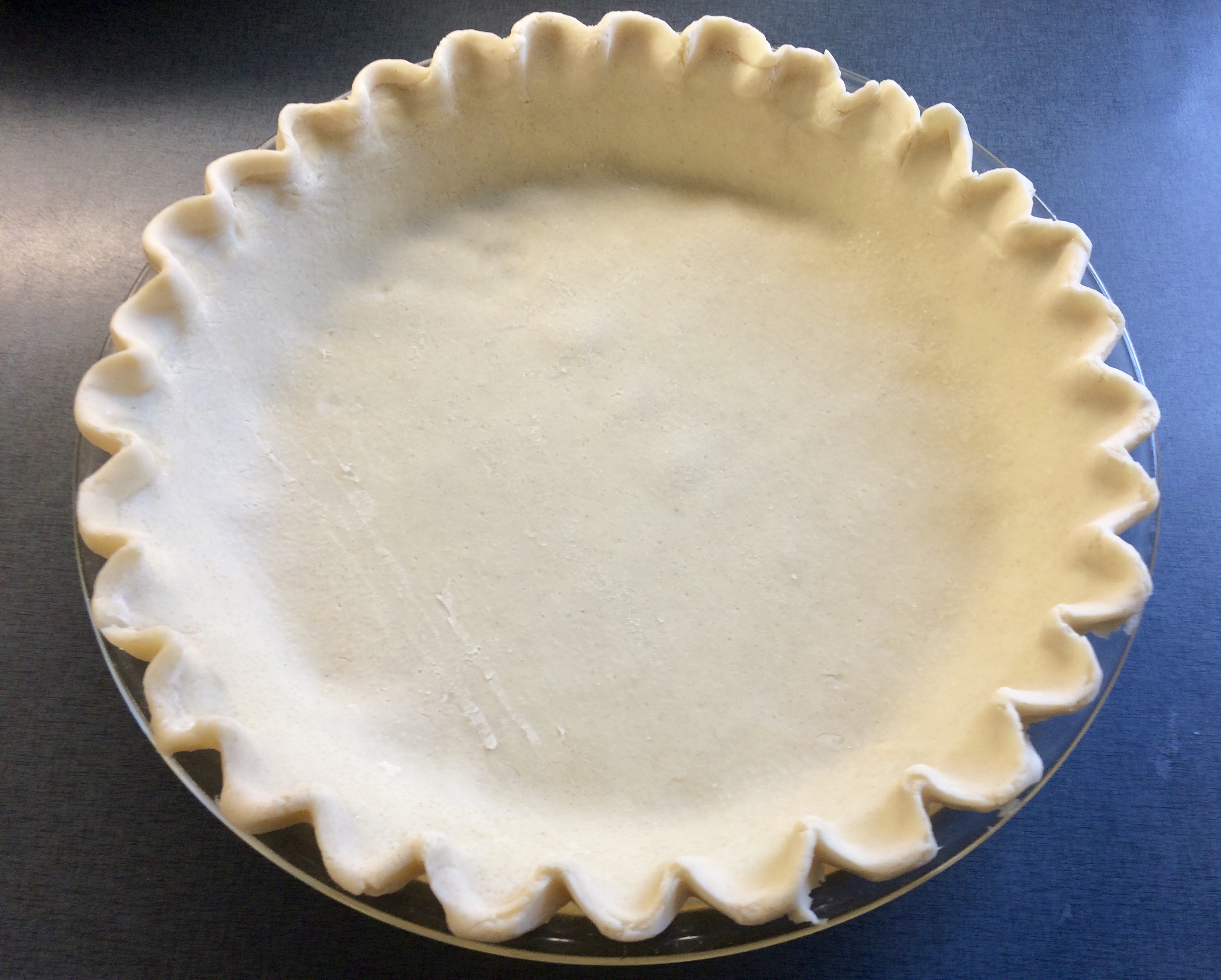
Flute as desired and then follow the directions for your pie filling. It may be baked with filling (pumpkin pie) or unfilled (lemon meringue pie) and then have filling added afterwards.
For a two crust pie, trim the overhanging edges and then add your filling – like this mixed berry pie.
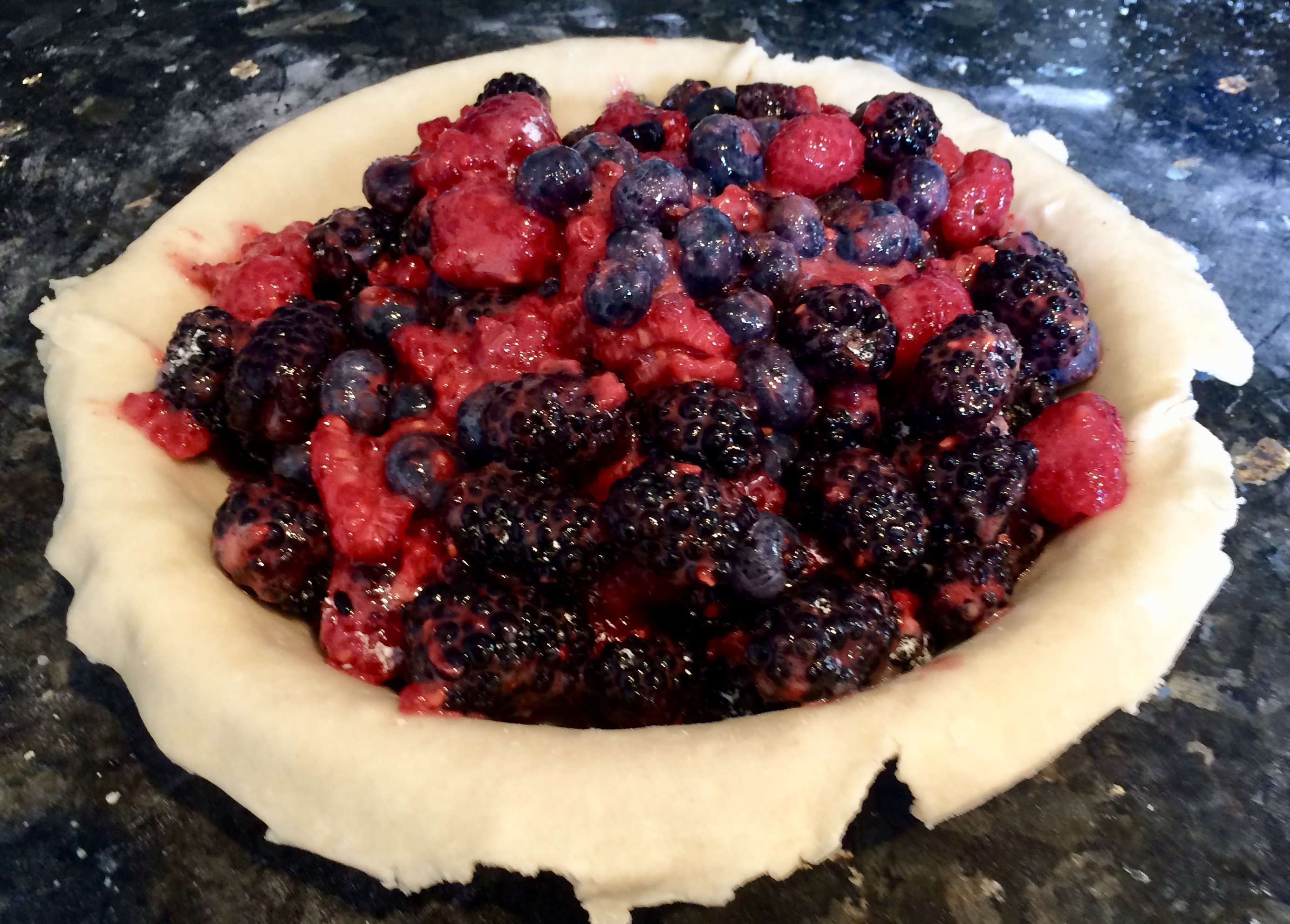
Roll the top crust in the same fashion as the bottom. Fold this dough just like the bottom crust and lay gently over the filling.
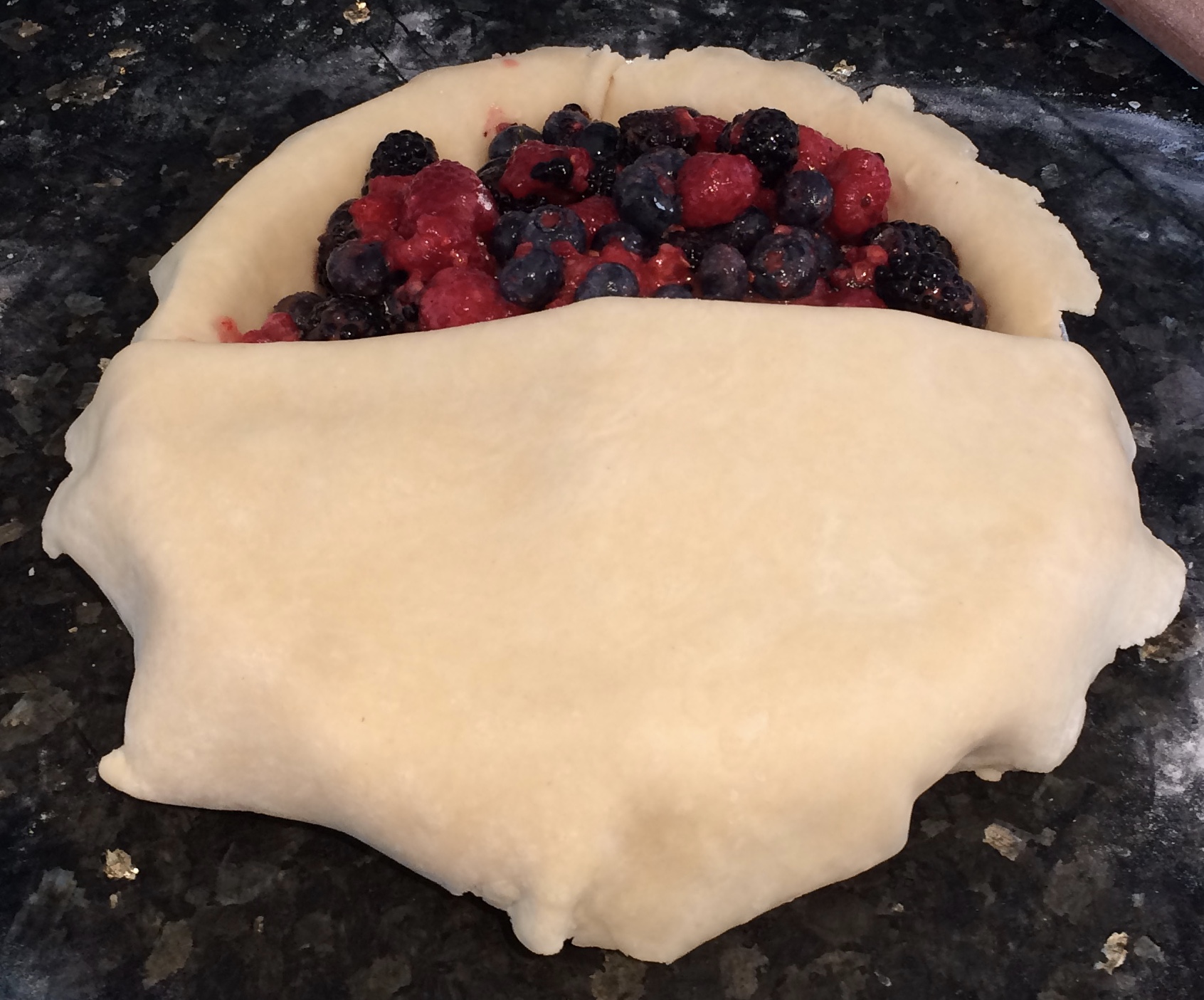
Trim any excess overhang and then fold the edge under to make a nice rim of dough on the edge of the pie plate. Flute as desired and bake.
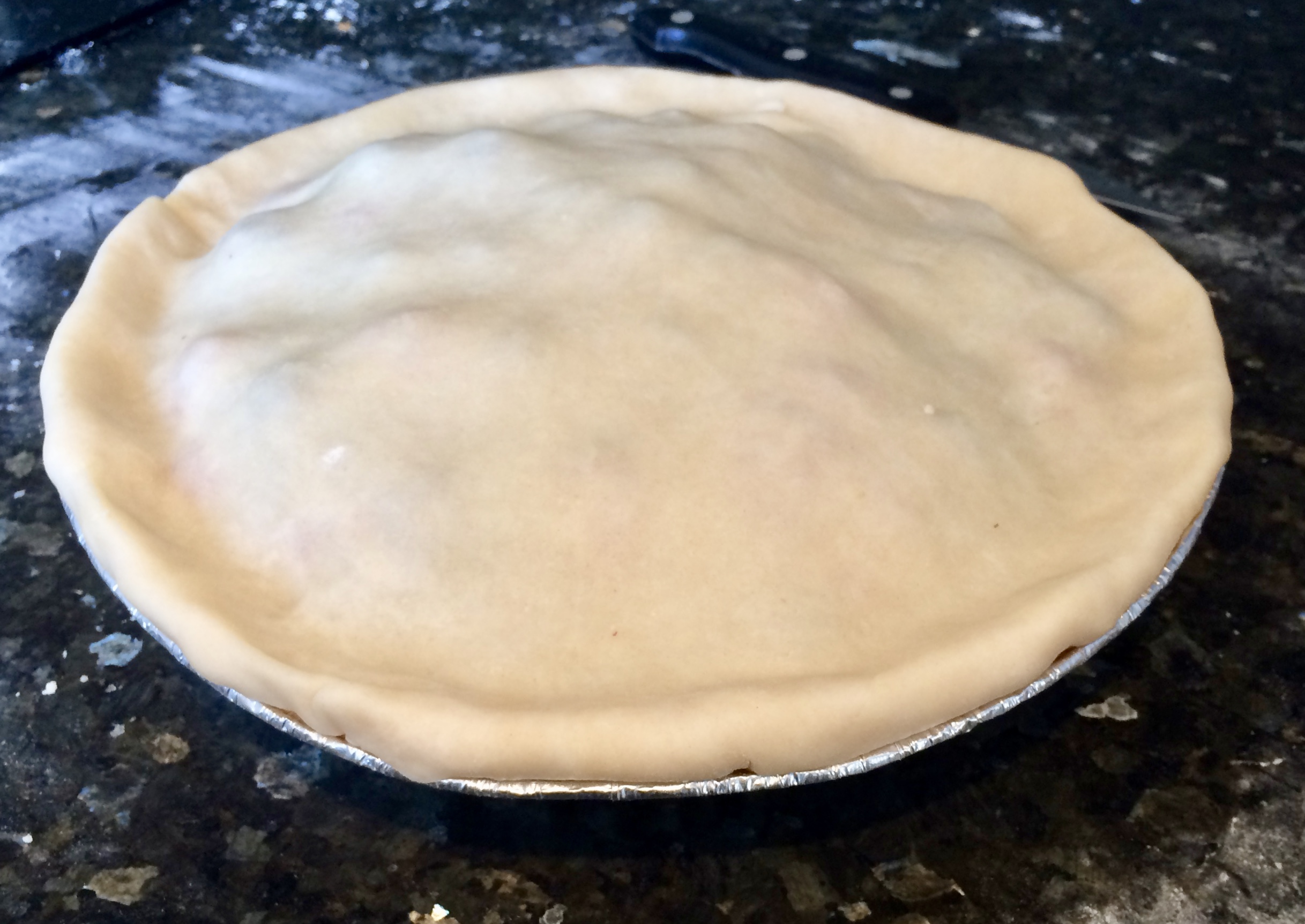
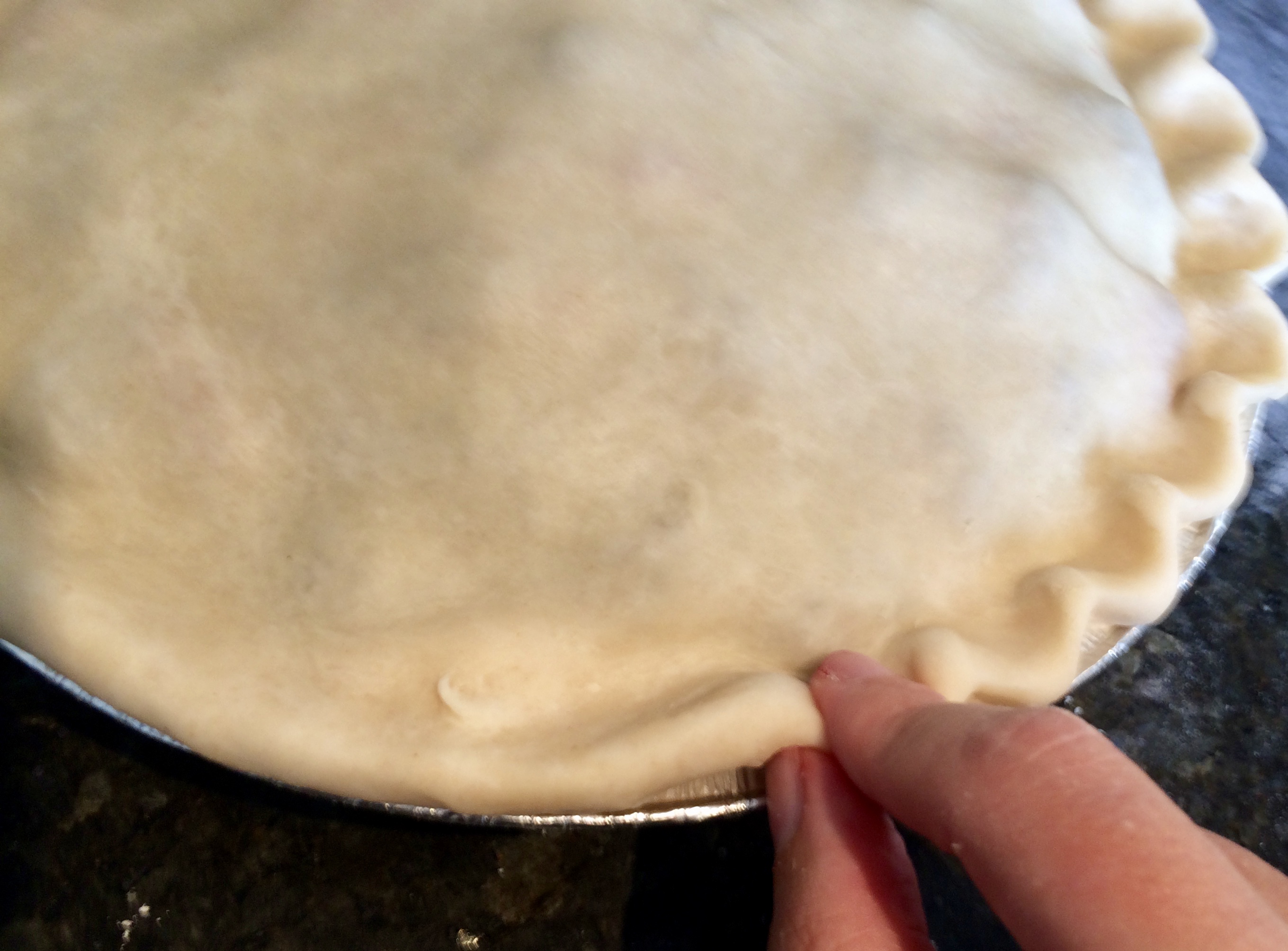
Alternatives
This butter pie pastry is great for those who struggle with crust because the butter gives it a bit more flexibility. This crust will not be quite as flaky as one made with lard or shortening. If you have mastered the rolling technique, a fifty/fifty mix of butter and lard will give you a delicious buttery crust that is also flaky and light.
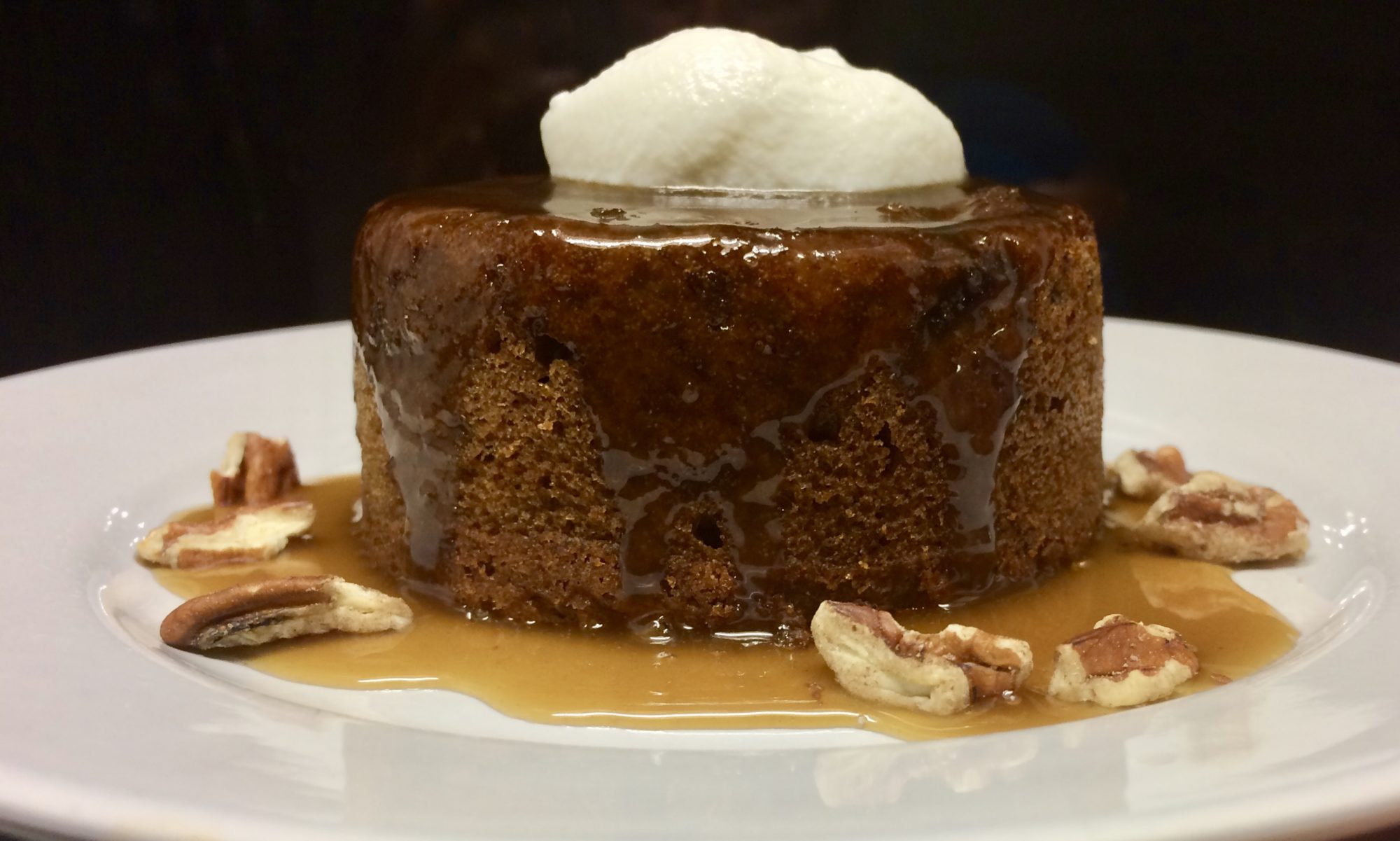




One Reply to “Butter Pie Pastry”